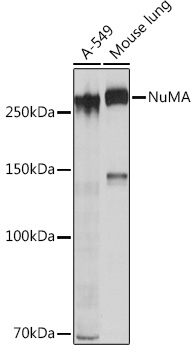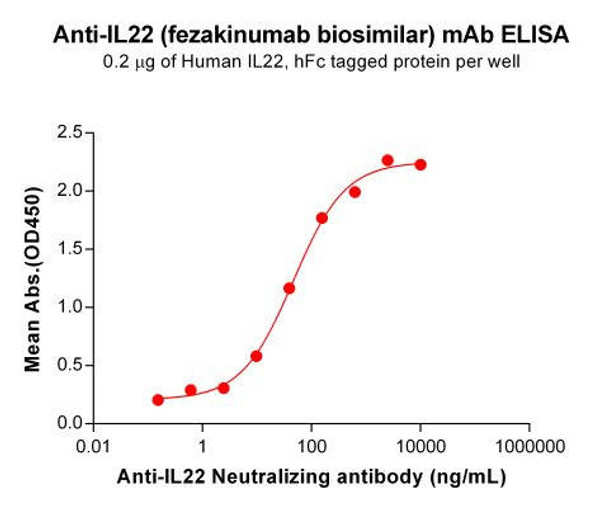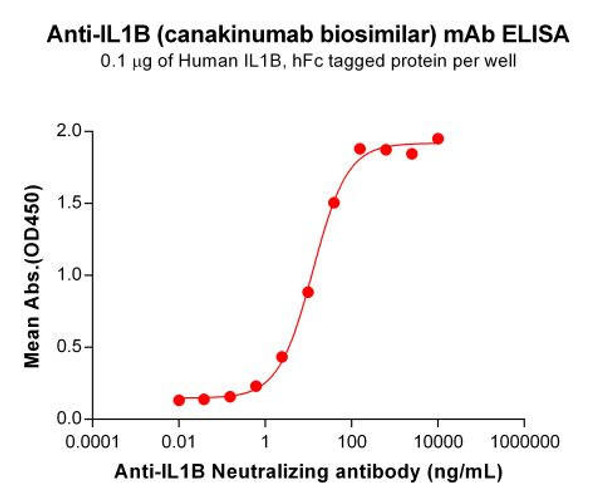Cell Cycle Antibodies 2
Anti-NuMA Antibody (CAB4416)
- SKU:
- CAB4416
- Product Type:
- Antibody
- Reactivity:
- Human
- Reactivity:
- Mouse
- Reactivity:
- Rat
- Host Species:
- Rabbit
- Isotype:
- IgG
- Research Area:
- Cell Cycle
Description
| Antibody Name: | Anti-NuMA Antibody |
| Antibody SKU: | CAB4416 |
| Antibody Size: | 20uL, 50uL, 100uL |
| Application: | WB IHC |
| Reactivity: | Human, Mouse, Rat |
| Host Species: | Rabbit |
| Immunogen: | A synthesized peptide derived from human NuMA |
| Application: | WB IHC |
| Recommended Dilution: | WB 1:500 - 1:2000 IHC 1:50 - 1:200 |
| Reactivity: | Human, Mouse, Rat |
| Positive Samples: | A-549, Mouse lung |
| Immunogen: | A synthesized peptide derived from human NuMA |
| Purification Method: | Affinity purification |
| Storage Buffer: | Store at -20'C. Avoid freeze / thaw cycles. Buffer: PBS with 0.02% sodium azide, 0.05% BSA, 50% glycerol, pH7.3. |
| Isotype: | IgG |
| Sequence: | Email for sequence |
| Gene ID: | 4926 |
| Uniprot: | Q14980 |
| Cellular Location: | |
| Calculated MW: | 238kDa |
| Observed MW: | 250KDa |
| Synonyms: | NMP-22, NUMA |
| Background: | This gene encodes a large protein that forms a structural component of the nuclear matrix. The encoded protein interacts with microtubules and plays a role in the formation and organization of the mitotic spindle during cell division. Chromosomal translocation of this gene with the RARA (retinoic acid receptor, alpha) gene on chromosome 17 have been detected in patients with acute promyelocytic leukemia. Alternative splicing results in multiple transcript variants. [provided by RefSeq, Nov 2013] |
| UniProt Protein Function: | NuMA-1: a coiled-coil nuclear protein that is required to establish and maintain mammalian spindle poles. Dissociates from condensing chromosomes during early prophase, before the complete disintegration of the nuclear lamina. As mitosis progresses it reassociates with telophase chromosomes very early during nuclear reformation, before substantial accumulation of lamins on chromosomal surfaces is evident. Two human splice-variant isoforms have been described. |
| UniProt Protein Details: | Protein type:Cell cycle regulation; Motility/polarity/chemotaxis Chromosomal Location of Human Ortholog: 11q13 Cellular Component: spindle pole; nuclear matrix; dendrite; chromosome; cytosol; nucleoplasm; Golgi membrane; cell soma; apical part of cell; spindle microtubule; cytoplasm; spindle; nucleus Molecular Function:protein binding; microtubule binding; structural molecule activity Biological Process: mitosis; meiotic cell cycle; establishment of mitotic spindle orientation; cell division; mitotic cell cycle; G2/M transition of mitotic cell cycle; nuclear organization and biogenesis Disease: Acute Promyelocytic Leukemia |
| NCBI Summary: | This gene encodes a large protein that forms a structural component of the nuclear matrix. The encoded protein interacts with microtubules and plays a role in the formation and organization of the mitotic spindle during cell division. Chromosomal translocation of this gene with the RARA (retinoic acid receptor, alpha) gene on chromosome 17 have been detected in patients with acute promyelocytic leukemia. Alternative splicing results in multiple transcript variants. [provided by RefSeq, Nov 2013] |
| UniProt Code: | Q14980 |
| NCBI GenInfo Identifier: | 145559510 |
| NCBI Gene ID: | 4926 |
| NCBI Accession: | Q14980.2 |
| UniProt Secondary Accession: | Q14980,Q14981, Q9BTE9, H0YH75, |
| UniProt Related Accession: | Q14980 |
| Molecular Weight: | 109,279 Da |
| NCBI Full Name: | Nuclear mitotic apparatus protein 1 |
| NCBI Synonym Full Names: | nuclear mitotic apparatus protein 1 |
| NCBI Official Symbol: | NUMA1 |
| NCBI Official Synonym Symbols: | NUMA |
| NCBI Protein Information: | nuclear mitotic apparatus protein 1; SP-H antigen; structural nuclear protein; centrophilin stabilizes mitotic spindle in mitotic cells |
| UniProt Protein Name: | Nuclear mitotic apparatus protein 1 |
| UniProt Synonym Protein Names: | Nuclear matrix protein-22 |
| Protein Family: | Nuclear mitotic apparatus protein |
| UniProt Gene Name: | NUMA1 |
| UniProt Entry Name: | NUMA1_HUMAN |
View AllClose







